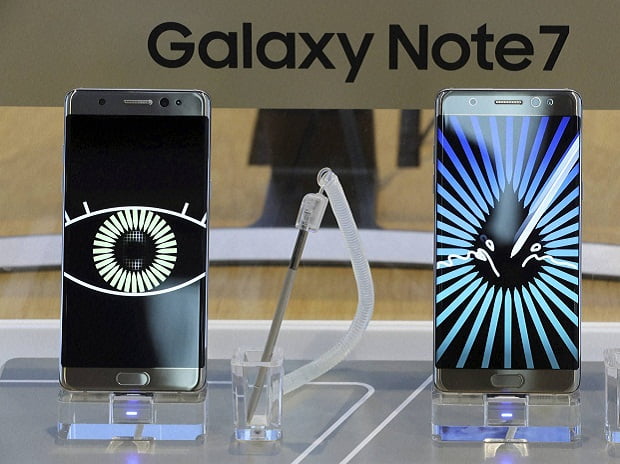
The cheapest one came for just Rs 251 while another made global headlines for catching fire. Year 2016 has indeed been the year of smartphones — for right reasons or wrong — as these powerful-yet-affordable devices pushed India ahead of the US as the world’s second-largest Internet userbase, with 2017 promising to be even better.
The year started with a little-known company called ‘Ringing Bells’ making global noise with its Rs 251- smartphone. While the industry was up in arms to say manufacturing such a device was not feasible even in China, customers stayed logged onto their computers for hours together in the hope of being able to register to buy the device.
Ringing Bells did manage to deliver a few of the promised handsets, but it was not without its share of controversy, with allegations that the company had merely cloaked and passed on another company’s device as its own.
A trend that clearly emerged from the event was India is hungry for affordable innovation. So, it is no surprise that the sub-Rs 10,000 category forms over 50 per cent of the Indian smartphone market. The category has flourished further, with domestic majors like Micromax and Lava bringing in multiple devices.
However, this segment was also one of the worst-hit by the government’s move to scrap old Rs 500 and Rs 1,000 notes. In the days that followed the announcement, companies saw their sales dipping by as much as 50 per cent, hurt by the double-whammy of cash shortage and cyclical dip that is seen post Diwali.
According to Gartner Research Director Anshul Gupta, smartphone shipment in India is expected to be a little lower at about 120 million units this year, impacted by demonetisation.
“Despite this, Indian market is growing at a healthy pace compared to 4-5 per cent growth being seen in global markets. India would continue to be one the fastest growing markets globally,” he added.
Companies are hopeful that 2017 will ring in good news and sales will return to healthy growth clip like that seen in the previous year.
A gamechanger this year was the entry of Reliance Jio into the Indian market. With its promise of free calls for lifetime and data at one-fifth of the market rates, Reliance’s foray sent sales of 4G phones in India skyrocketing, especially in the second half of the year.
“Over the past few years, there has been a tremendous growth in consumers’ mobile data demand and consumption patterns. Digital revolution in India has further led to a paradigm shift from 3G to 4G, and to tap this trend, various mobile players are offering innovative and affordable devices bundled with offers and cost-effective VAS services,” Intex Director Nidhi Markanday said.
While affordable devices have done well in terms of shipment numbers, it has been the mid and premium categories that have been the revenue drivers for handset makers.
The likes of HTC, Oppo and OnePlus have continued to focus on higher price points, bundling in better specifications and delivering more power-packed devices.
“We feel there will be a consolidation in the Rs 10,000- 20,000 segment. In 2016, the mid-premium segment jumped to 25 per cent of the category as compared to 17 per cent in 2015 which is a clear 89 per cent growth. Also, average selling prices (ASPs) will creep up in the category,” Micromax co- founder Rahul Sharma said.
The ASPs were Rs 8,400 in 2015. In 2016, it crossed Rs 9,000 while the volumes stagnated.
“We clearly see this trend to continue in 2017 as well and ASPs will continue to grow upwards,” he said.
Lenovo India Executive Director, Mobile Business Group, Sudhin Mathur agreed, saying even though refresh cycles have reduced to under a year now, users are comfortable shelling out more money for a smartphone with better set of features and looks.
Manufacturing in India has also gained ground with companies like Xiaomi, Lenovo, Vivo, LeEco and Coolpad now meeting a significant part of their requirement locally. While companies continue to source components from established locations like China and Taiwan, they are hopeful that government initiatives will further help in maturing of the ecosystem and support full-fledged manufacturing domestically.
A major push in this direction may come in 2017 if Apple starts manufacturing in India. The iconic iPhone maker has sought incentives from the Indian government as it views the country among its fastest growing markets globally.
The year 2016 also saw Samsung — the world’s largest handset maker — in the firing line following reports of its flagship ‘Note 7’ devices catching fire.
What started as a few stray incidents escalated into bans on aircraft across countries like the US and India, and Samsung was forced to recall and then pull the plug on the device.
2017 will also mark the return of ‘Nokia’, with the smartphones being powered by Android operating system this time. Following its association with Microsoft a few years ago, Nokia had adopted Windows Phone OS and that many believed added to the decline in popularity of the brand.
While Microsoft bought the smartphone business from Nokia, the Finnish company retained the rights for the ‘Nokia’ brand name and has now inked a 10-year licensing agreement with HMD Global to unveil a fresh line-up of smartphones. HMD is also bringing in feature phones to ensure it does not get left behind this time.
The year was tough for iconic smartphone brand BlackBerry as well. While it continues to attempt a re-haul to revive fortunes, it will be some time before its efforts like outsourcing manufacturing and focus on software instead of hardware start bearing fruit.
[SOURCE:-BS]







